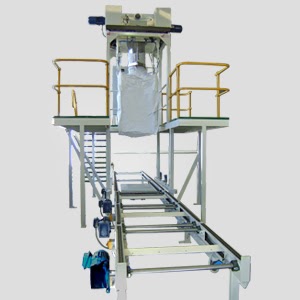When it comes to the unloading of bulk bags, unloaders designed specifically for this task help make the entire unloading process easier and hassle-free and contribute to cost reductions. At the same time, material handling introduces some sort of challenges within the manufacturing process.
Some manufacturing industries experience these challenges for years and show great interest in using bulk bag unloaders. It eventually has worked great in solving these main challenges and is also quite beneficial in increasing manufacturing efficiencies.
Let’s look at some of the key challenges that must be taken into account when looking at the bulk bag unloading process.
Bag Connection Process
Most bulk bag unloaders are required to be capable enough to accommodate different bag sizes with different pout diameters and the extent of spout available for joining to the transfer module. If the system has high throughput, it may result in the requirement of creating a method that can help in minimizing the supply shortfalls downstream in the unloading process.
Most of the unloading places look for dust-free transfer as well as bag tensioning capability to make sure the complete unloading of the bag. Addressing these problems along with creating a friendly and safe system for an operator can be one of the real challenges.
Powder Flow
Most of the bulk bag unloading places should be capable of handling a variety of powders, but there are chances that some of them may not flow in a proper way. The large chunks can result in an improper discharge of the powder. So, it is very important to choose accurate flow aids for a system during the design process.

Dust Control
When a large quantity of powder is transferred in a shorter amount of time using bulk bag unloaders, there are high chances of experiencing a lot of displaced air. If this process is not managed properly, then it will create a lot of dust. It may also result in the leaking of powder around the bag connection. A poorly designed system can lead to dust explosion hazards, which in turn can expose operators to a high level of airborne dust.
Loss in Weight
Many unloading processes need to have control over the transfer of the net product. Here, the challenge is to manage the flow of the product and control the loss in weight of the bulk bag. This is a common challenge when there is a tight weight tolerance. The bag tensioning as well as the product flow control mechanism are some of the serious components for an actual loss in weight design.
Partial Bag Unloading
There are some unloading processes that require the transfer of partial bag quantity. Here, the main challenge is to reclose the spout and to keep the bag well-connected for the next iteration. If the bulk bag unloaders are designed improperly, then it is nearly impossible to prevent product leaks or spills.
So, it becomes important to work on these challenges in order to make the entire unloading process more effective and safe.






